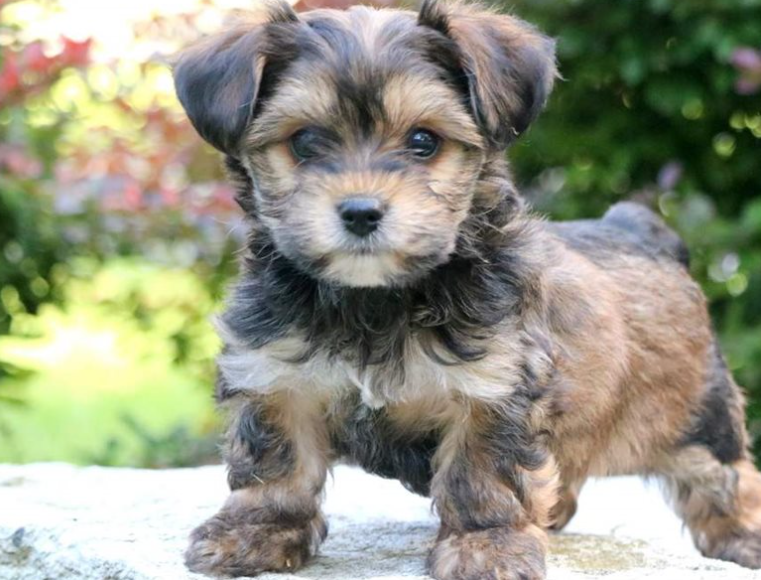
Quick Top 10 Facts about Blackpoll Warbler
| SCIENTIFIC NAME | Setophaga striata |
| CLASSIFICATION | KINGDOM: Animalia PHYLUM: Chordata CLASS: Aves ORDER: Passeriformes FAMILY: Parulidae GENUS: Setophaga SPECIES: S. striata |
| SIZE | Length: 12–15 cm (4.7–5.9 inches), Wingspan: 20–25 cm (7.9–9.8 inches) |
| HABITAT | Boreal forests during breeding season; tropical forests during wintering in South America |
| DIET | Insects, spiders, and berries (especially during migration) |
| SPECIES | Belongs to the New World warblers group |
| COUNTRY | Breeds in Canada and Alaska; migrates to northern South America |
| GESTATION PERIOD | Incubation: ~12 days; Fledging: 10–12 days after hatching |
| LIFE SPAN | Typically around 5–7 years in the wild |
| CONSERVATION STATUS | Least Concern – but populations are declining due to habitat loss |
Amazing Facts About Blackpoll Warbler
1. They perform one of the longest migrations of any songbird
Blackpoll Warblers fly non-stop over the Atlantic Ocean for up to 3 days during migration!
2. Weigh less than a ballpoint pen
Despite their long journey, these tiny birds weigh only around 12 grams.
3. Males have distinctive black caps
In breeding season, males sport a black cap and white cheeks, making them easy to identify.
4. They are long-distance champions
Their migration spans from Alaska or Canada all the way to South America—up to 12,000 km annually.
5. They fatten up before migration
To fuel their journey, they double their body weight before heading south.
6. Females and non-breeding males look different
They are duller in color compared to breeding males, making them harder to identify.
7. Their call is very high-pitched
Often described as insect-like, their call can be hard for some people to hear.
8. They breed in remote forests
They prefer the dense coniferous forests of the boreal north, far from human disturbance.
9. They’re critical to forest ecosystems
By feeding on insects, they help control pest populations naturally.
10. Climate change threatens their breeding grounds
Warming temperatures may reduce the availability of their preferred habitat in the north.
Range and Habitat distribution of Blackpoll Warbler bird
The Blackpoll Warbler, scientifically known as Setophaga striata, is a small, migratory songbird that belongs to the family of New World warblers. Its primary distribution is in North America; it breeds in the Canadian and Alaskan boreal forests before migrating to South America for the winter.
Physical features of the Blackpoll Warbler bird
The unique black and white plumage of this species, with its black streaks on the back and white underparts, sets it apart. The male Blackpoll Warbler also has a black cap, while the female wears a greyish-brown hat. These colours allow them to blend in with their surroundings and protect themselves from predators.
Long-distance migration of the Blackpoll Warbler bird
One of the most remarkable characteristics of the Blackpoll Warbler is its long-distance migration. It has one of the longest uninterrupted flights of any songbird, covering about 2,500 miles nonstop across the Atlantic Ocean. They go on this incredible journey from their breeding grounds in North America to their wintering places in northern South America. Fueled by their fat reserves, they often make stops in Bermuda or the Caribbean to relax and refuel.
Blackpoll Warbler Bird diet preferences for insects, spiders, and berries
The Blackpoll Warbler is mostly an insectivore, eating a variety of insects, spiders, and other small invertebrates. For sustenance, they collect insects from foliage and trees or catch them in midair. During mating season, they add fruits and berries to their diet.
International care and conservation efforts for Blackpoll Warbler Bird
Regarding conservation status, the International Union for Conservation of Nature (IUCN) now classifies the Blackpoll Warbler as a species of least concern. However, like many other migratory birds, they face threats such as habitat loss, climate change, and accidents involving construction throughout their protracted travels. Not only are efforts being made to raise public awareness of the need to preserve these habitats for the survival of this remarkable species, but measures are also being taken to protect their breeding and wintering areas.

Fascinating and lesser-known facts about the Blackpoll Warbler Bird
Small and migratory, the Blackpoll Warbler (Setophaga striata) is a member of the Parulidae family of birds. It is readily distinguished from other warbler species by its characteristic black cap and white wing bars. Primarily prevalent in North America, Blackpoll Warblers breed in the boreal woods of Canada and Alaska before wintering in South America. We’ll look at some fascinating information on the Blackpoll Warbler’s amazing trip below:
Extensive migration journey of the Blackpoll Warbler Bird
The amazing migratory trip of the Blackpoll Warbler is among its most remarkable features. During its migration, this small bird, which weighs just approximately half an ounce, makes an amazing, nonstop journey across the Atlantic Ocean. The Blackpoll Warbler travels more than 2,000 miles to reach its wintering habitats in South America, leaving its breeding sites in Canada and Alaska. One of the longest overwater migrations of any songbird is said to have taken place on this trip.
Naming Culture and popularity of the Blackpoll Warbler Bird
The Blackpoll Warbler gets its name from the stunning black hat it wears on its head during mating season. Nevertheless, this cap vanishes, and the bird becomes more muted during the non-breeding season. Its plumage changes a greyish-brown, which reduces its visibility in its environment throughout the winter. Many migratory bird species often undergo this shift in appearance, which helps them to fit in with their environment and evade predators.
Vocalisations of the Blackpoll Warbler Bird
The swift and high-pitched song of the Blackpoll Warbler is characterised by a succession of melodic notes. During the mating season, male warblers sing to mark and protect their territory. People often describe their songs as a high, thin “zee-zee-zee” or “zee-zee-zoo-zoo.” Blackpoll Warblers use these vocalisations as a vital communication tool to attract mates and preserve their social hierarchy.
Preferred Diet of the Blackpoll Warbler Bird
The principal food source for the Blackpoll Warbler is insects, spiders, and other tiny invertebrates. It gathers insects from branches and foliage or hovers to capture them midair as it searches for food. Known to use an unusual eating technique, the Blackpoll Warbler migrates through areas where food supplies may be limited. It eats a lot of berries and fruits to put up weight before starting its lengthy voyage. This gives the bird the energy reserves it needs to continue flying across the ocean without stopping.
Threats faced by Blackpoll Warbler Bird, such as habitat loss or climate change
The International Union for Conservation of Nature presently lists the blackpoll warbler as a species of “Least Concern” (IUCN). Like many migratory bird species, it is threatened by a number of issues that might eventually affect its population. Some of the main issues that the Blackpoll Warbler and other migratory birds face include habitat loss from deforestation, climate change, and pesticide usage. To ensure this species’ long-term existence, conservation initiatives are essential. These include supporting sustainable practices and safeguarding breeding and wintering habitats.
Emphasise the importance of understanding and conserving the Blackpoll Warbler Bird
The Blackpoll Warbler is an amazing bird whose incredible migratory trip and distinctive qualities enthral both birdwatchers and scholars. The Blackpoll Warbler never ceases to amaze and excite with its long-distance trip across the Atlantic Ocean, appearance changes, and unique vocalisations. Understanding and appreciating the beauty of species like the Blackpoll Warbler reminds us of the significance of conserving biodiversity for future generations as we work to safeguard and conserve our natural environment.
FAQ (Frequently Asked Questions) about Blackpoll Warbler Bird
Q: What is a Blackpoll Warbler?
Ans: The Blackpoll Warbler (Setophaga striata) is a small songbird known for its striking black-and-white plumage in the male and its long migratory journey. It is a part of the wood warbler family and is found mainly in North America during the breeding season.
Q: Where do Blackpoll Warblers live?
Ans: Blackpoll Warblers breed in the forests of northern North America, particularly in Canada and Alaska. During migration, they travel to Central and South America for the winter. They are commonly found in coniferous and mixed forests during their breeding season.
Q: What does the Blackpoll Warbler eat?
Ans: The Blackpoll Warbler primarily feeds on insects, including beetles, caterpillars, and flies. They may also consume berries and seeds, especially during migration when insects are less abundant.
Q: How do Blackpoll Warblers migrate?
Ans: Blackpoll Warblers are famous for their long migration. They fly thousands of miles from their breeding grounds in North America to their wintering grounds in the Amazon basin of South America. They are known for their incredible stamina and typically migrate in large flocks.
Q: Are Blackpoll Warblers endangered?
Ans: No, Blackpoll Warblers are not considered endangered. However, like many migratory birds, they face challenges due to habitat loss, climate change, and other environmental factors that can affect their migration routes and breeding habitats.
Q: How big is a Blackpoll Warbler?
Ans: Blackpoll Warblers are relatively small, measuring about 4.5 to 5 inches (11.5 to 13 cm) in length and weighing around 10 grams. They have a distinctive appearance, with a black cap on their head and white underparts with streaks along their sides.
Q: How can you identify a Blackpoll Warbler?
Ans: Male Blackpoll Warblers have a striking black cap and a white belly, with dark streaks on their sides. Females and younger birds have a more subdued appearance but still possess the signature black-and-white markings. In all genders, you can also spot them by their dark legs and slender build.
Q: What is the Blackpoll Warbler’s song like?
Ans: The song of the Blackpoll Warbler is a series of high-pitched, thin notes that sound somewhat like “see-see-see, see-choo.” The song is commonly heard during the breeding season and is used by males to attract mates and defend territories.
Q: When can you see Blackpoll Warblers?
Ans: Blackpoll Warblers are most often seen during the spring and fall migration periods. They breed in northern North America from late spring to summer and then migrate southward in the fall, stopping in various locations along the way. They can sometimes be spotted during the winter in their tropical habitats.
Q: Can Blackpoll Warblers be kept as pets?
Ans: Blackpoll Warblers are wild birds and are not suitable to be kept as pets. They play an important role in ecosystems as insect controllers, and it is best to appreciate them in their natural habitats.
#BlackpollWarbler, #Songbird, #BirdWatching, #MigratoryBirds, #WoodlandBirds, #NorthAmericanBirds, #BirdConservation, #BirdMigration, #Wildlife, #NaturePhotography, #Warblers, #BirdLife
Our sources and references about Blackpoll Warbler Bird
1: Wikipedia – Blackpoll Warbler
2: Audubon – Blackpoll Warbler
3: All About Birds – Blackpoll Warbler
4: The Nature Conservancy – Blackpoll Warbler


